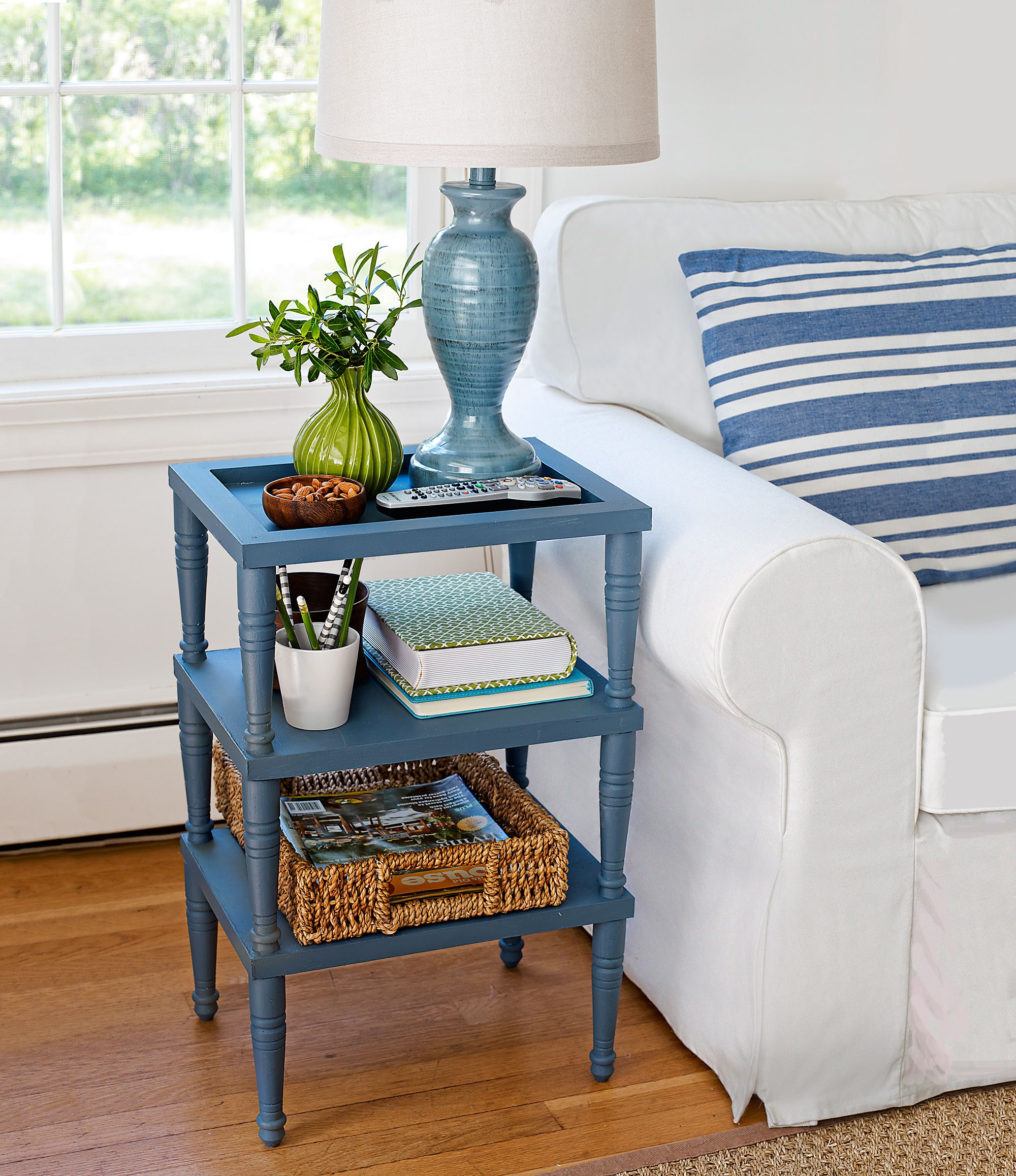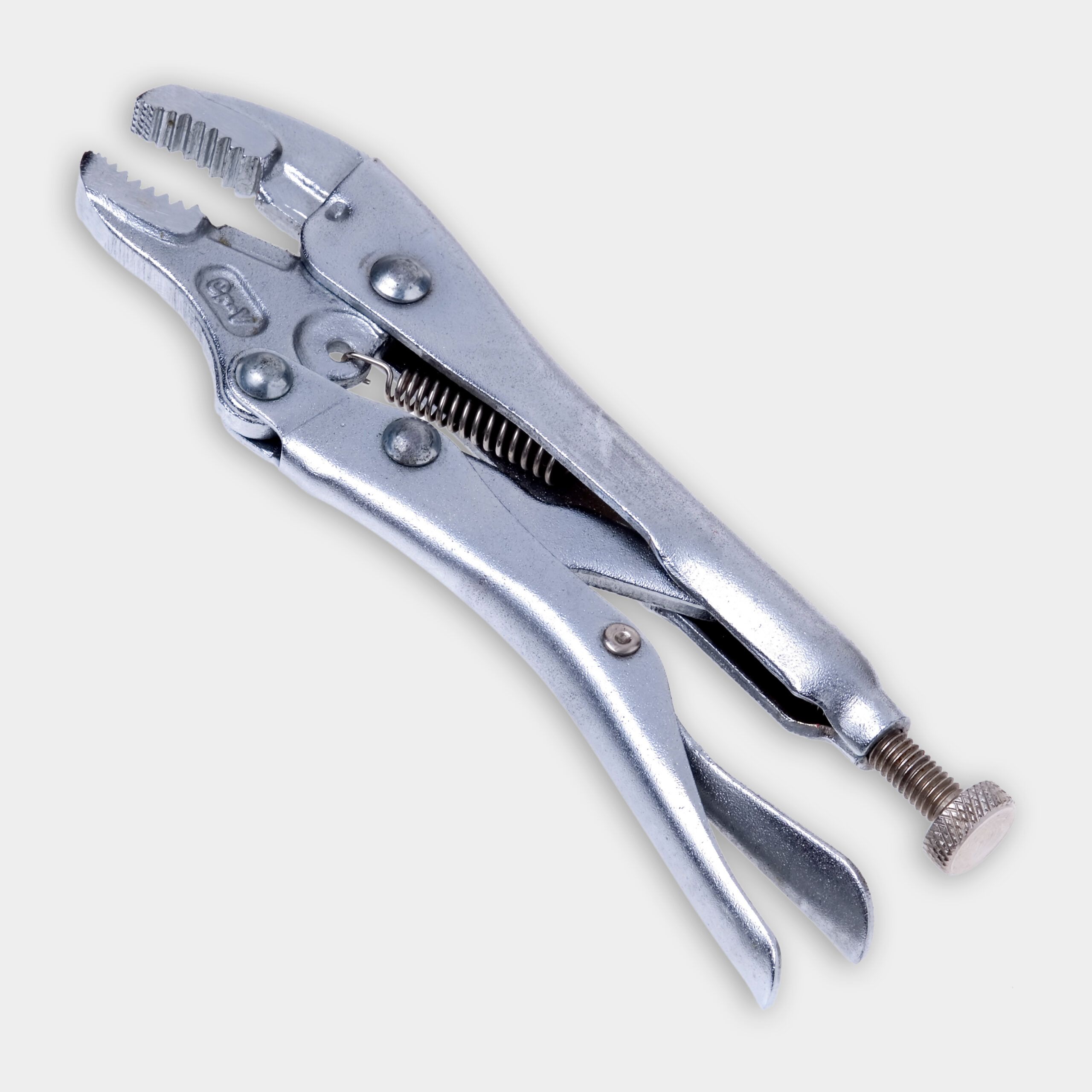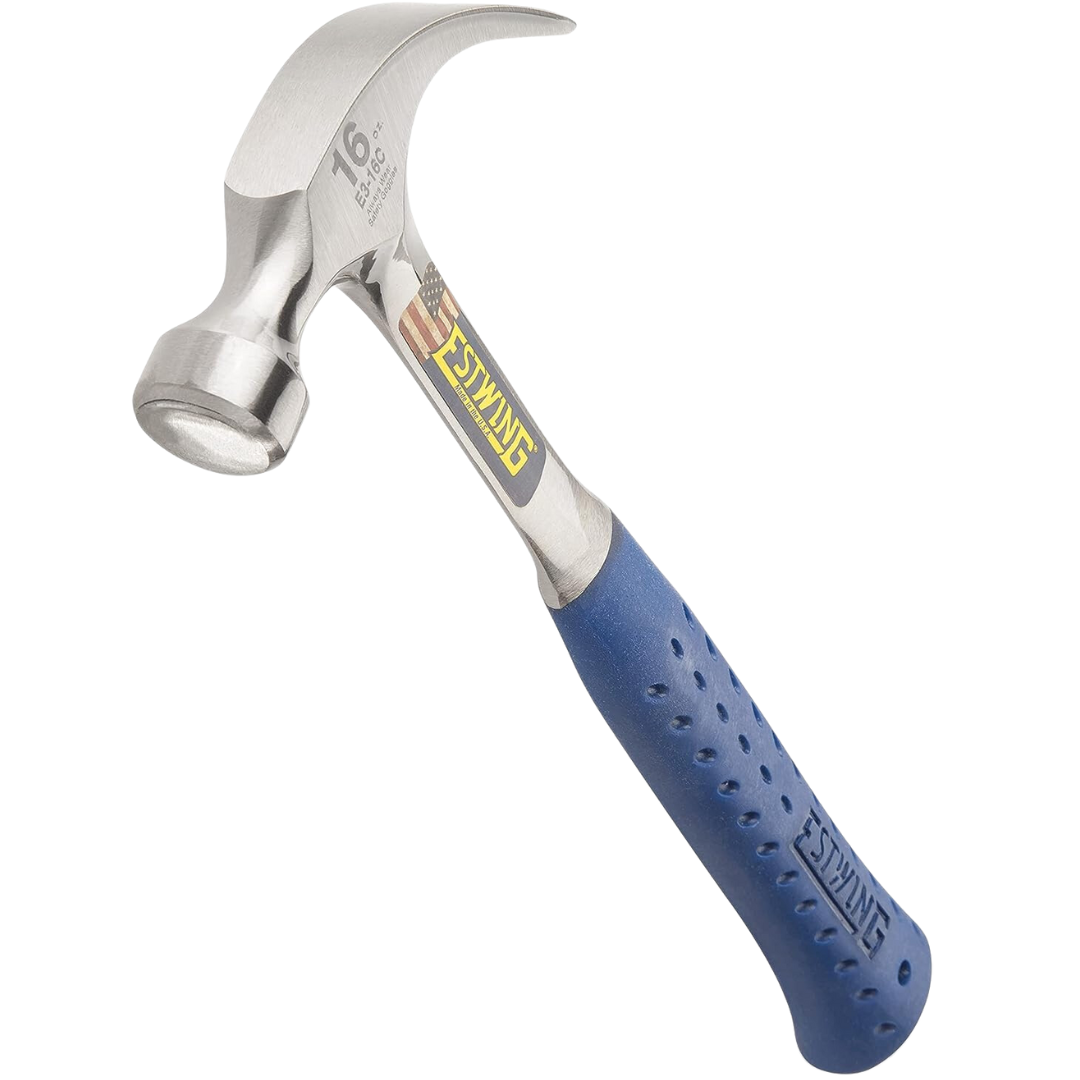We may be compensated if you purchase through links on our website. Our Reviews Team is committed to delivering honest, objective, and independent reviews on home products and services.
Project details
Skill
Cost
Estimated Time
Any couch potato knows that a handy side table is an essential ally for a lazy Sunday morning. You won’t even have to get off your duff for very long to make the one shown here, thanks to a clever design by This Old House general contractor Tom Silva. He reimagined wood panels from an art supply store as table surfaces, with two flipped upside down and the top one right-side up for a tray-like appearance, and connected them with turned legs to create this simple yet sturdy DIY side table. With three easy-access surfaces for stashing odds and ends, you’ll have no excuse for losing the remote in the sofa cushions ever again.
Step 1: Gather Supplies for Your Three-Tiered Table
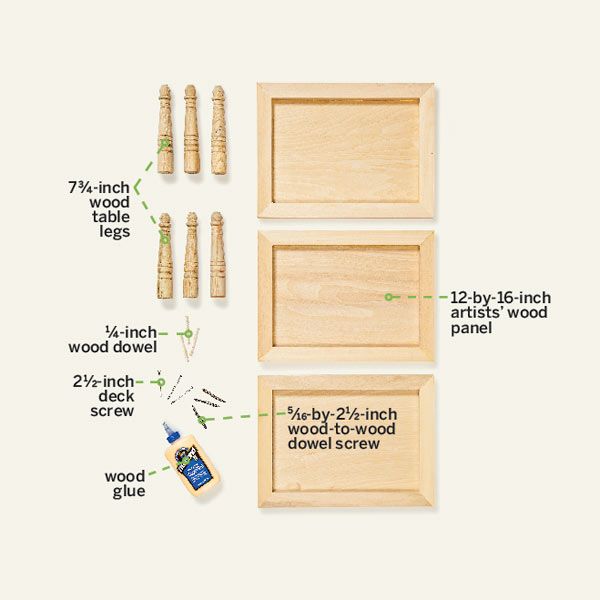
We designed our 25-inch-tall three-tier side table to be roughly the same height as the arm of the sofa next to it. The table legs we chose were short enough to give us this height with minimal cutting and thin enough to fit within the corners of the panels’ frames. Like many prefab table legs, they came with hanger bolts that screw into metal furniture plates—we simply removed the bolts with locking pliers. You can find the wood-to-wood dowel screws that hold the lower tiers of the table together at larger home centers and lumberyards.
Step 2: Mark Pilot-Hole Locations on the Panels
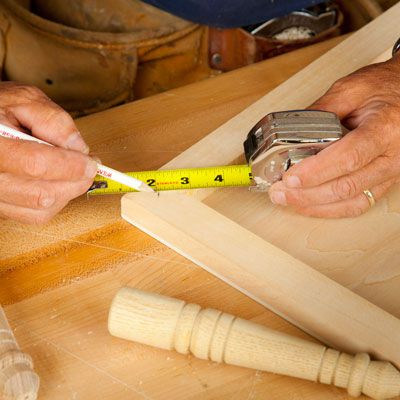
Measure the distance between the outer and inner corners of the panels’ frames, and mark the center points. Use locking pliers to remove the hanger bolts from the legs, and center the top of a leg on each mark to make sure it lands within the frame.
Step 3: Drill Pilot Holes
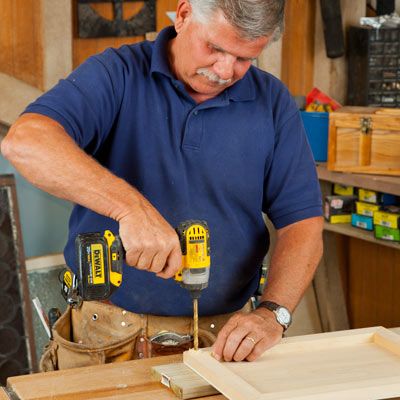
Place a piece of scrap wood under the panel to protect your work surface. For two of the panels, drill ¼-inch pilot holes through the marks you made in Step 2; these will accommodate the dowel screws. For the tabletop, which will be attached with deck screws, drill 3⁄32-inch pilot holes and countersink for the screwheads.
Step 4: Trim Eight Legs to Size

Use a miter saw to slice off the narrow bottoms of eight legs for the top and middle tiers. (The remaining surface should be at least three times the diameter of the dowel screws that hold the tiers together.) If needed, tuck a shim beneath each leg, as shown, to make sure your cut is square. Remember to wear safety glasses and work gloves when operating the miter saw.
Step 5: Drill Holes in the Bottoms of the Trimmed Legs
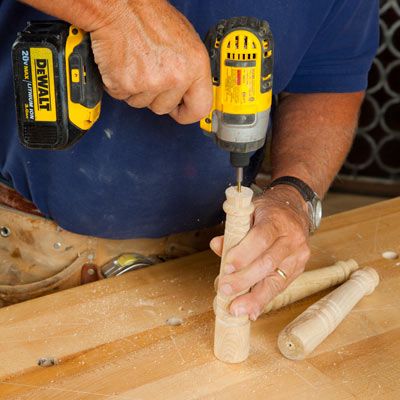
Mark the centers of the bottoms of the legs you cut in Step 4. Drill ¼-inch-diameter, ⅝-inch-deep holes at these marks for the dowel screws. (The tops of the legs will already have holes from the hanger bolts you removed in Step 2.)
Step 6: Attach Dowel Screws to Four Legs
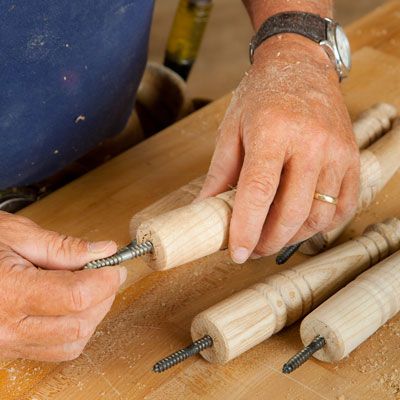
Twist dowel screws into the tops and bottoms of the four legs that you’ll use for the middle tier. Tighten them by hand at first, then use locking pliers to turn them until they’re sunk about halfway into the legs, with the unthreaded portion of the screws exposed.
Step 7: Build the Lower and Middle Tiers
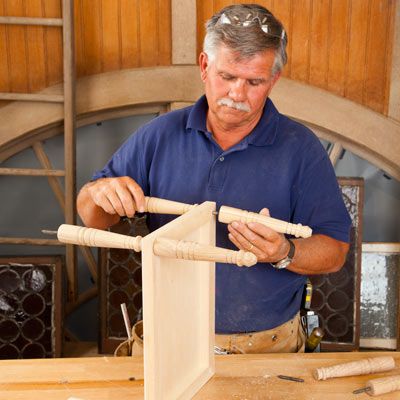
Thread the dowel screw at the bottom of a middle leg through the underside of the lower panel. Hold the leg firmly and twist a lower leg onto the exposed screw until both legs are snug. Repeat for the remaining middle and lower legs. Tighten each leg securely to prevent wobbling.
Step 8: Plug Top Holes in the Upper Legs
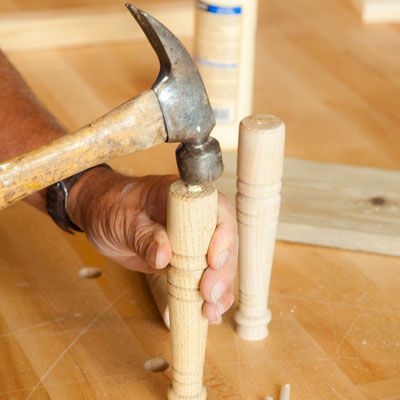
This will let you attach the tabletop with thinner deck screws. Insert a dowel into the top hole of an upper leg, mark the dowel where it meets the leg, and cut the dowel at the mark. Add glue to the leg’s top hole, and hammer in the dowel until flush. Repeat for all legs. Let the glue dry before drilling shallow pilot holes in the dowels for the screws.
Step 9: Finish the Table
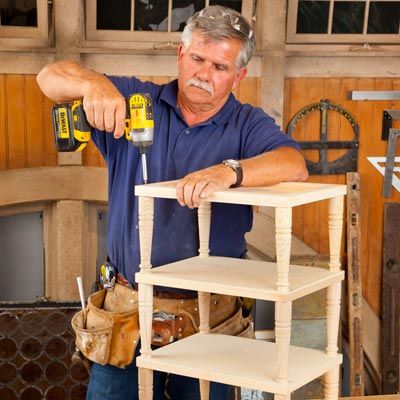
Fit the middle panel frame-side down onto the screws in the middle legs, and twist the upper legs onto the exposed screws. Place the tabletop frame-side up and centered on the legs. Drive deck screws through the pilot holes in the tabletop and into the legs. Cover the screwheads with wood filler, then sand, prime, and paint.
Double-check all joints and connections and reinforce any weak points with additional screws or wood glue. You should regularly inspect your table and tighten any loose components.
Customize Your Table
Consider these ideas to transform your table into a one-of-a-kind piece.
Paint and Stain
Use a solid color paint to match or complement your room’s decor or a two-tone finish with contrasting colors for the legs and panels. Alternatively, you can stain the wood to highlight the grain for a more natural look. Apply your chosen finish in thin, even coats, allowing proper drying time between applications.
Adding Decorative Elements
Attach patterned molding to the edges of the panels or apply decoupage or stencils for a unique design. For more structural decorations, add glass inserts to the top tier for an elegant touch or install small drawer pulls or knobs to the front of each tier.
Alternative Materials
For a rustic, eco-friendly option, use reclaimed wood for your table. Metal accents can add a sleek and modern touch, while marble inserts give a luxurious feel.
Troubleshooting Common Issues
Here are solutions to common problems you may have when building the table.
- Uneven Legs: If your table wobbles, sand down longer legs. Use adhesive-backed felt pads on the bottom of the shorter legs for minor adjustments.
- Loose Connections: Tighten all screws and dowels. If a screw hole has become stripped, fill it with wood filler, allow it to dry, and re-drill. For loose dowel connections, apply wood glue and clamp until dry.
- Warped Panels: Lay the panel flat and weigh it down with heavy objects. Let it sit for several days to see if it flattens. For severe warping, use heat and moisture. If this doesn’t work, you may need to replace the panel.
